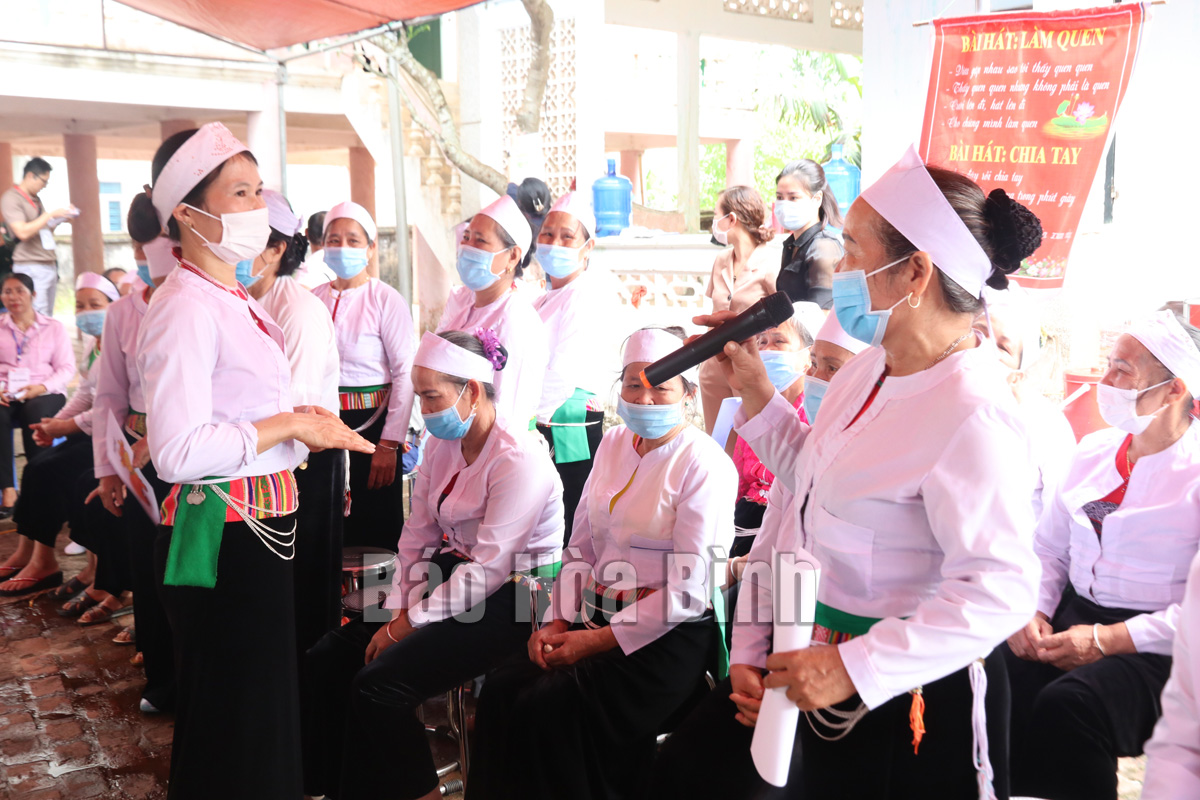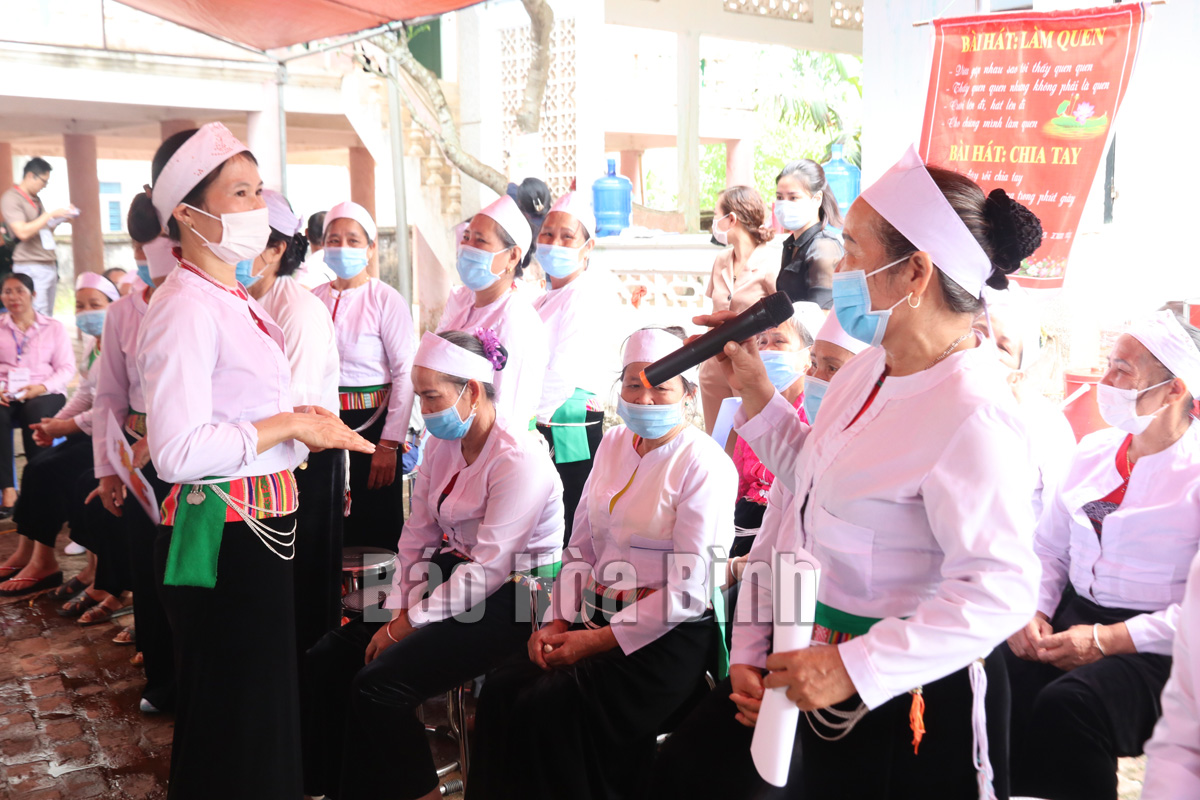
(HBO) – As usual, members of the Inter-generational Self-Help Club of Mong sub-area of Luong Son township of Luong Son district gather for a monthly meeting on every 24th day of the month. For local residents, the club has become a common house for them and a place where they can find support, said Nguyen Thi Nhung, one of the members of the club.
Photo: At a meeting of the Inter-generational Self-Help Club of Mong sub-area of Luong Son township of Luong Son district.
The club was established in November 2021 with 50 members, 70% of them senior citizens. It has helped 30 members access soft loans worth 139 million VND (5,914 USD), while maintaining the operation of five volunteer groups to assist the elderly facing difficulties.
Nguyen Thi Binh, President of the club, said it has received funding from the project of reducing income and health-related vulnerability of old persons in Vietnam (Project VIE071). In each meeting, members receive healthcare service and legal education; and join cultural, art and sports activities, she said.
To date, Luong Son has seen the operation of nine of such clubs in Lam Son, Tan Vinh, Hoa Son, Nhuan Trach communes and Luong Son township. Members of the clubs have been provided with loans totaling nearly 850 million VND. The clubs have coordinated with medical facilities to give health check-ups and treatment to more than 300 members.
The clubs have received great attention from local authorities who have attended every meeting. Training courses have also been organised for their leaders. The clubs have also been provided with a number of medical equipment.
Le The Vinh, deputy head of the representative board of Luong Son Association of the Elderly, said that the model has been effective in caring for and promoting the rights of the elderly, helping improve their living quality. He expressed his hope that the district will receive more support from the State to multiply the model./.
With an increasingly vibrant and widespread emulation movement aimed at building cultured residential areas and cultured families, Yen Thuy District has been making steady progress toward improving both the material and spiritual well-being of its people, while fostering a civilized, prosperous, beautiful, and progressive community.
Once lacking recreational spaces and community facilities, Residential Group 2 in Quynh Lam Ward (Hoa Binh City) has recently received attention for the construction of a new, spacious, and fully equipped cultural house. The project followed the model of state support combined with public contributions in both labor and funding.
The "All people unite to build cultural life" movement, which has been effectively integrated with Kim Boi district’s socio-economic development goals, is fostering a lively spirit of emulation across local residential areas, hamlets, villages, public agencies, and enterprises. In addition, through the initiative, traditional cultural values are being preserved and promoted, while community solidarity and mutual support in poverty reduction and economic development are being strengthened.
A working delegation of the Hoa Binh provincial People’s Committee led by its Permanent Vice Chairman Nguyen Van Toan on June 11 inspected the progress of a project to build the Mo Muong Cultural Heritage Conservation Space linked to tourism services in Hop Phong commune, Cao Phong district.
Born and growing in the heroic land of Muong Dong, Dinh Thi Kieu Dung, a resident in Bo town of Kim Boi district, in her childhood was nurtured by the sweet lullabies of her grandmother and mother. These melodies deeply imprinted on her soul, becoming an inseparable part of her love for her ethnic group's culture. For over 20 years, this love for her hometown has driven Dung to research, collect, and pass down the cultural values of the Muong people to future generations.
In the final days of May, the Ethnic Art Troupe of Hoa Binh Province organized performances to serve the people in remote, mountainous, and particularly disadvantaged areas within the province. These were not just ordinary artistic shows, but they were the meaningful journeys aimed at spreading cultural values, enhancing the spiritual life of the people and contributing to the preservation of ethnic minority cultural identities.



